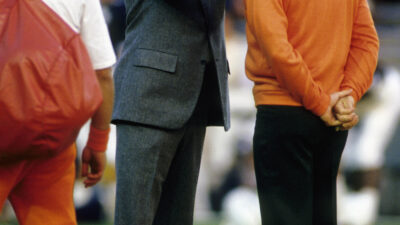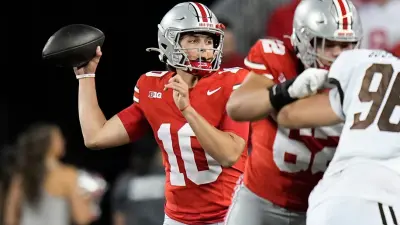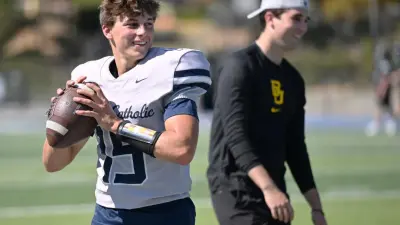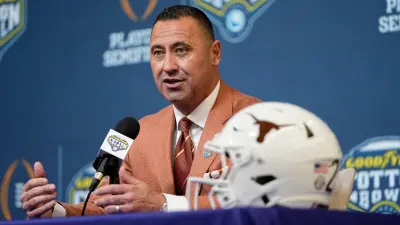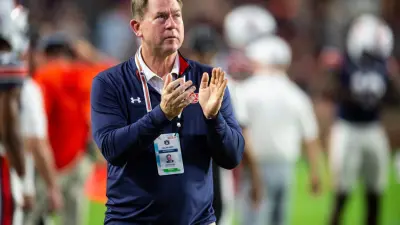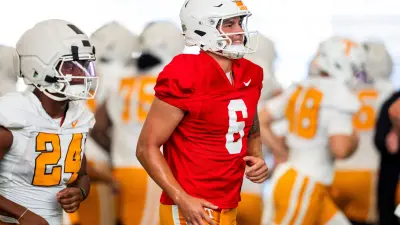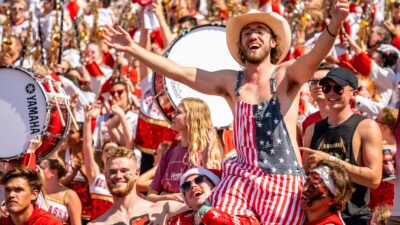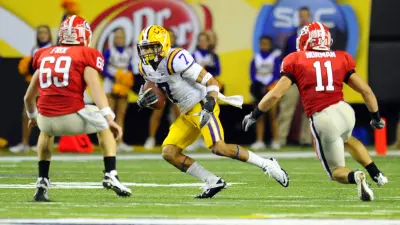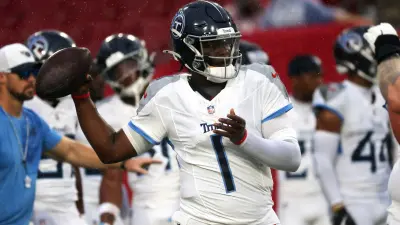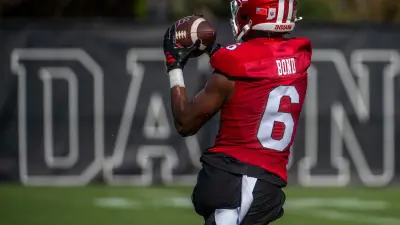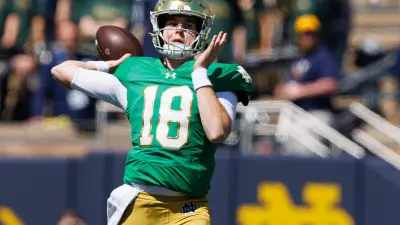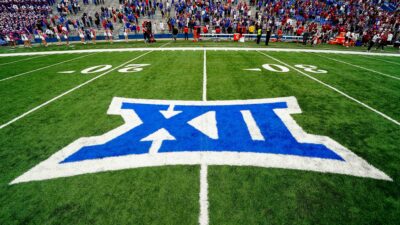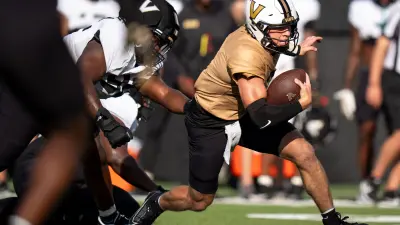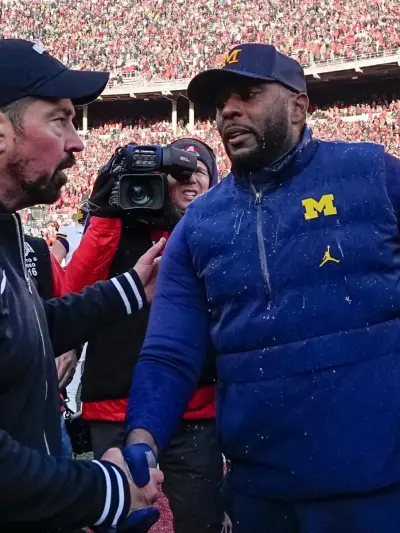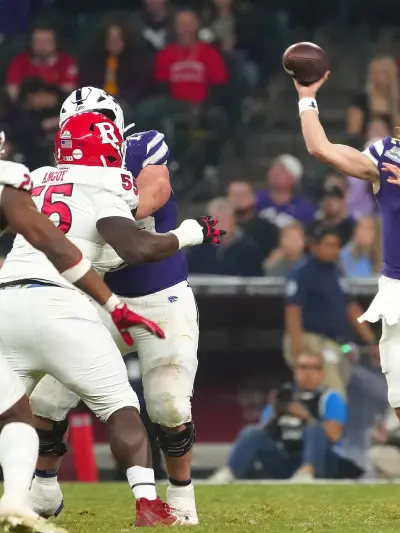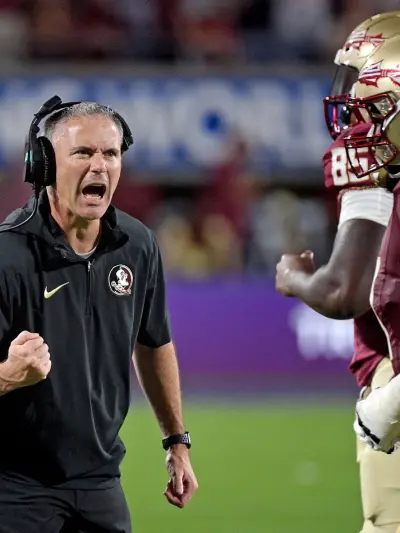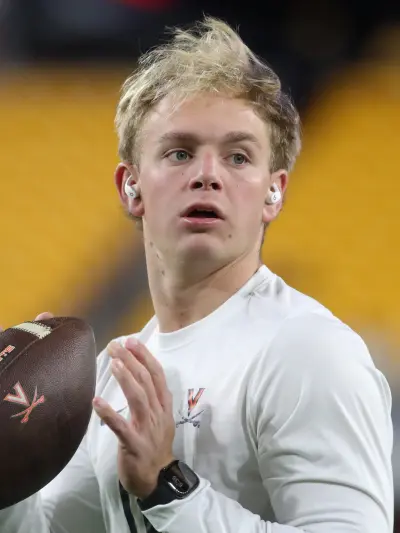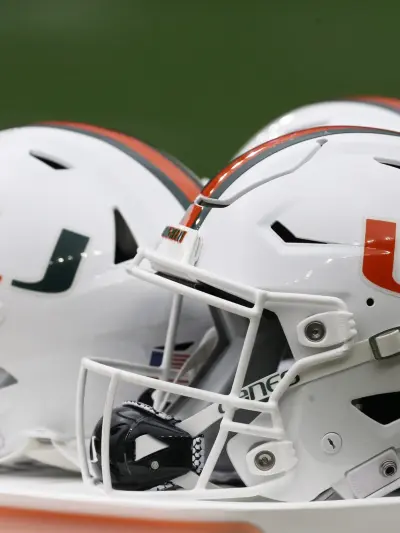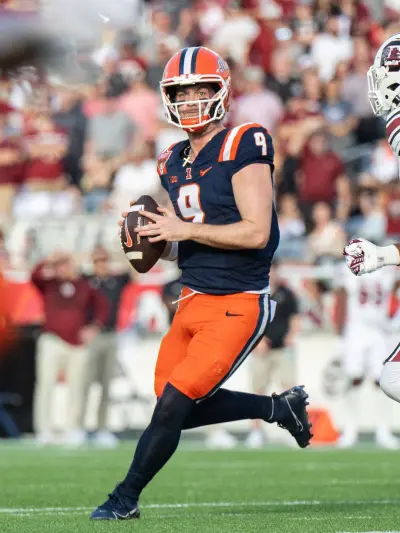Joe Paterno was the only coach in the decade to win multiple national championships tops our list as “Coach of the Decade,” but Penn State’s Golden Era almost didn’t come to be.
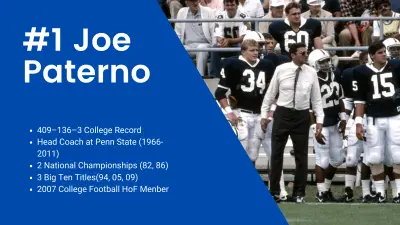
During the 1979 Sugar Bowl, Paterno in his first national championship game as head coach was squaring off against “Bear” Bryant and the Alabama Crimson Tide, it came to a critical junction in the contest.
Penn State faced a fourth and goal from the one foot line trailing 14-7 in the fourth quarter.
Paterno knowing Alabama was thinking it would be a powered up the middle, wanted to either run a bootleg or a pass in the flat to counter the power notion.
He was talked out of his convictions and ultimately chose to run running back Mike Guman up the middle. As the play ensued Guman is met almost immediately by Alabama defensive lineman Barry Krauss, who stops all forward momentum by Guman, chips his helmet, and pinches a nerve in his neck.
More Sports News
Another coaching blunder that hurt the Nittany Lions chances against the Tide was later in the fourth quarter when Penn State needed a stop, got the stop, and forced an Alabama punt.
Alabama punter Woody Umphrey had to play his position as a baseball third basemen playing the hot corner as the snap was botched and bounced to him and he was only able to kick it out of bounds at the Alabama 30 yard line.
While Penn State was ever so ready to capitalize on the Alabama mistake, Penn State sent 12 men on the field and was penalized giving Alabama momentum off of the deflating miscue allowing Alabama to drain most of the clock to secure Bryant his fifth national championship.
Following the game, Paterno took it very hard saying in his autobiography “Paterno: By the Book” that he seriously considered retirement and had offers to work in the financial sector of New York City.
Paterno would slowly bounce back, dealing with much of the hangover through a tumultuous 1979 season.
The 1980 season saw Penn State win 10 games including a Fiesta Bowl win against Ohio State.
Penn State looked to return to the national championship picture in 1981 and even earned the No. 1 ranking for consecutive weeks. Penn State traveled to a resurgent Miami program under head coach Howard Schnellenberger and future NFL Hall of Famer Pennsylvania native at quarterback Jim Kelly.
During the contest, All-American running back Curt Warner injured his left thigh after sustaining a hamstring injury against West Virginia the previous week. The four field goal misses did not help either as Penn State fell to Miami 17-14.
Later that season, “Bear” Bryant made his only trip to Beaver Stadium and gave Joe Paterno another coaching lesson.
In what was up to that point the most embarrassing half of football in Joe Paterno’s career up to that point, Alabama focused on passing and passing deep something Paterno did not think Alabama could do efficiently being that Alabama was running the wishbone offense.
Alabama quarterback Walter Lewis connected early and often against a Penn State defense that wasn’t prepared, guiding the Crimson Tide to 334 first half yards and 24-0 lead.
Bryant and Alabama would get the win and the lessons learned would payoff almost immediately.
In the season finale, Penn State traveled to face No. 1 Pitt at Pitt Stadium for their annual rivalry.
Pitt was led by three future NFL Hall of Famers with quarterback Dan Marino, tackle Jimbo Covert, and defensive end Chris Doleman as well as future NFL Pro Bowl players in tackle Bill Fralic, and defensive tackle Bill Maas.
Pitt jumped out to a quick 14-0 lead and it looked fait accompli that the Panthers were on their way to playing for the national championship.
Early in the second quarter, Pitt was driving again threatening to go up three possessions when Marino decided to take a shot to the end zone. Marino’s pass was intercepted by Penn State defensive back Roger Jackson and the momentum began to swing for Penn State in a very serious way.
Everything that went wrong in the first quarter went right for the Nittany Lions the rest of the way as Penn State put up 48 unanswered points to upset Pitt and give Penn State the momentum needed to championship glory.
After securing back-to-back Fiesta Bowl wins, this time against Heisman Trophy winner Marcus Allen and Southern California, it set up Penn State for national championship aspirations in 1982.
Going into the season, Penn State’s philosophy was going to be changed to “Air Paterno” as Penn State had the offensive weapons to challenge opponents through the air with quarterback Todd Blackledge, running back Curt Warner, wide receivers Kenny Jackson, Kevin Baugh, and Gregg Garrity.
Penn State would get an early season boost by rallying back in the closing seconds against Nebraska.
However, the Nittany Lions couldn’t overcome its Alabama vex losing in Legion Field 42-21 to the Crimson Tide.
Penn State rallied to beat two Top 15 opponents on the road (West Virginia and Notre Dame) and held off No. 5 Pitt at home to earn a shot against No. 1 ranked Georgia led by running back Herschel Walker for the national championship.
Four years after heartbreak in the Sugar Bowl against Alabama, Penn State delivered the heartbreak for the Georgia Bulldogs as quarterback Todd Blackledge connected with wide receiver Gregg Garrity for the deciding score to give Paterno his first national championship.
The national championship hangover was fierce for the Nittany Lions in 1983.
Nebraska sought and got revenge in the first annual Kickoff Classic destroying Penn State 44-6.
The losses continued to mount including a head scratcher to Cincinnati 14-3 at Beaver Stadium and Iowa in a shoot out 42-34.
After bouncing back against Rutgers and Temple, Penn State faced a new look Alabama team as Ray Perkins took over for “Bear” Bryant.
The game was a seesaw battle that saw the Nittany Lions take a 34-28 lead and the final sequence is one of the most controversial endings in college football history.
Alabama quarterback Walter Lewis gunned a pass to tight end Preston Gothard and by first glance it looks like he scored the game tying points but the official ruled the pass incomplete citing he did not have his feet in bounds.
Alabama was given another chance to score, due to Penn State being offsides, and could not execute as Paterno got his first win against Alabama.
Penn State returned to the national championship picture in 1985, opening the season against No. 7 Maryland who was led by quarterback Stan Gelbaugh, running back Alvin Blount, and tackle J.D. Maarleved had championship aspirations of their own.
Penn State kept it close and Nittany Lion safety Michael Zordich had a highlight reel pick-six to lead the upset over Maryland.
Penn State would get another hard-fought win against Alabama at home and go undefeated in the regular season setting themselves up for a national championship berth against Oklahoma.
As the 1986 Orange Bowl began to play out, the Nittany Lions looked out of sync and in a foreign world. Even with a Penn State defense bending but not breaking, it eventually broke on Jamelle Holieway’s 71 yard touchdown connection to tight end Keith Jackson.
Penn State could not slow down the Oklahoma wishbone attack being gutted for 228 yards rushing on 52 carries and did not score in the second half.
The defeat set up a 1986 season that Penn State wanted to claim a second national championship, something the class of seniors experienced as freshman for the 1982 team.
Penn State sprinted to a quick 6-0 start with a looming trip to No. 2 Alabama, who was loaded with talent with All-American linebackers Cornelius Bennett and Derrick Thomas, quarterback Mike Shula, and running back Bobby Humphrey, who would lead the Tide in rushing with 1,471 yards and 15 touchdowns.
The Nittany Lions defense came in and put a major clamp on the Crimson Tide sacking Shula five times and forcing five turnovers.
The Penn State offense was efficient led by a quartet at running back D.J. Dozier, Blair Thomas, Steve Smith, and Tim Manoa, who all made plays everywhere overpowering an elite Crimson Tide defense.
Penn State’s resounding 23-3 defeat was the worst home loss for the Crimson Tide since 1955.
In back-to-back weeks, the Nittany Lions encountered scares from Maryland and Notre Dame where both could of spoiled an undefeated season.
Penn State turned away a Maryland two point conversion that could have led to a tie,
Against a rejuvenated Notre Dame team under first year coach Lou Holtz, kept fighting and one Penn State simply could not put away Notre Dame.
Two key sequences secured the game for Penn State.
First was a play call Paterno gave quarterback John Shaffer was to progress from the weak side of the field, shake the Notre Dame safeties, and through the progression locate wide receiver Ray Roundtree on a wheel route.
The play went as scripted as Shaffer ran through his progression, Roundtree ran undefended and Shaffer delivered a strike to put Penn State ahead.
Notre Dame in the final moments of the fourth quarter, drove inside the Penn State ten yard line and the Nittany Lion defense turned away the Irish offense with defensive back Ray Isom sticking wide receiver Tim Brown for no gain and Bob White with a key sack.
Penn State would lock up a Fiesta Bowl berth with a 34-14 rout of rival Pitt to conclude an 11-0 campaign.
In Paterno’s 46 seasons head coaching Penn State, and in the decade of the 1980’s there was no game bigger than the 1987 Fiesta Bowl against Miami.
The game quickly drew a “Good vs. Evil” approach as Miami arrived in camouflage fatigues and quickly decided to be the bad guy.
One of the notorious incidents came at a banquet for both teams and each team had opportunity to poke one another. Miami players took issue with Penn State ribbing of them and the school.
Miami defensive lineman Jerome Brown got up and in fatigues asked the figurative question did the Japanese eat with the enemy before they attacked? When his teammates screamed no, Miami got up and left.
There was no love loss between the teams and NBC in the pregame hype promoted it Vinny Testaverde vs. Joe Paterno in the video vignettes and promos.
Early in the game, Miami opposed its will on both sides of the ball. Pushing Penn State backwards.
Penn State defensive coordinator Jerry Sandusky helped come up with nearly 100 different looks for Testaverde, the confusion led to seven Miami turnovers.
Miami could run at will on the Nittany Lions but one of Jimmy Johnson‘s flaws is he wanted the style points as well instead of taking the game.
Miami outgained Penn State 445 to 162 total yards, 22 first downs to 8, and complete domination everywhere but the scoreboard.
Down 14-10 late, Miami drove the length of the field and the final play was Penn State linebacker Pete Giftopolous late interception to seal the win for Penn State.
The impact from such a landmark game is it became the model college football has chased ever since.
The game drew an estimated 52 million viewers and had a 25.1 rating. The game that has gone the closest to equal that rating was the 2006 Rose Bowl between Texas and Southern Cal with a 21.7 rating.
Paterno became a coaching immortal after that win, and it cemented his place in the history of college football.
Penn State would never win another national championship or reach the heights it did in the 1980’s under Joe Paterno.
While the national championships put him ahead of his peers in the decade, the other aspect is Penn State usually won the big games. During the decade, Paterno guided Penn State to a 22-17-1 record versus ranked teams, 16 of those 22 wins were against Top 10 ranked teams, including 10 games against teams ranked in the Top 2 with Penn State going 5-5 in those games.
Paterno was the ultimate big game coach of the 1980s and his success in the biggest moments is why he tops my list as top coach of the 1980s.
